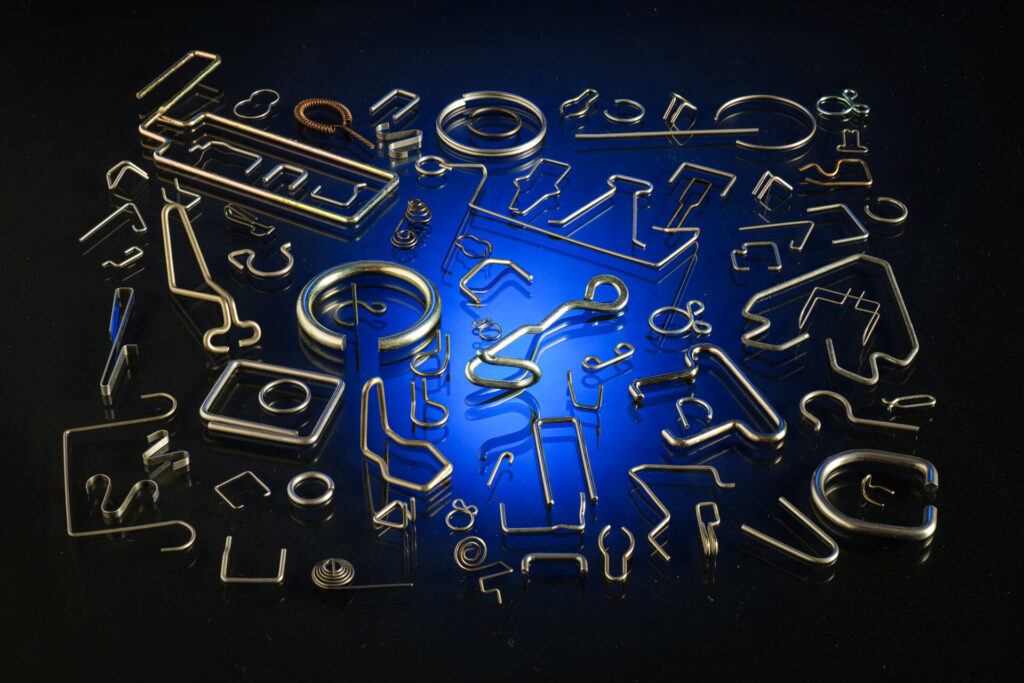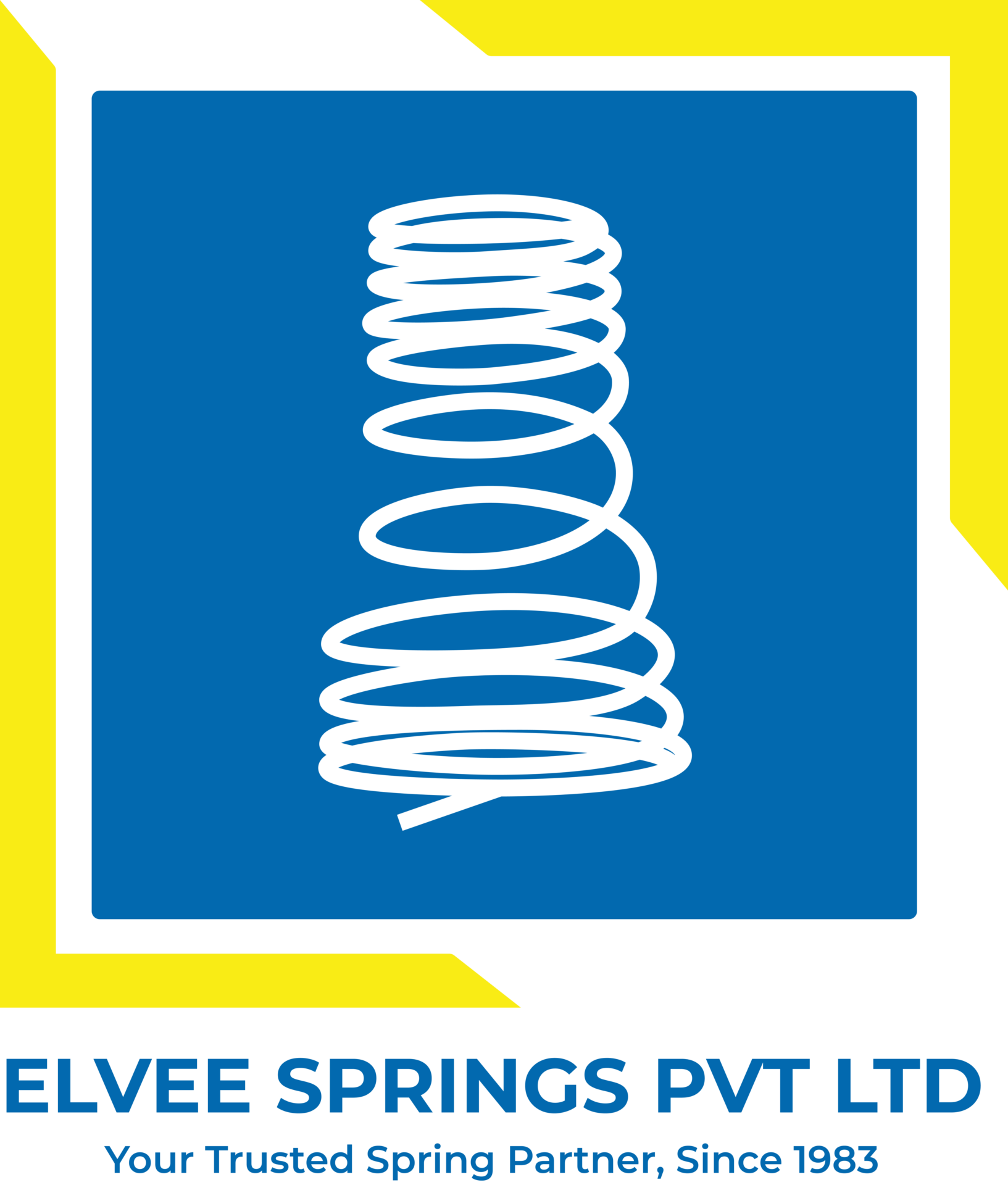
Wire forms
Manufacturing Process of Wire Forms:
The manufacturing process of wire forms involves several steps to ensure precision, consistency, and strength in the final product.
Material Selection:
- Wire forms can be made from a variety of materials, including stainless steel, high-carbon steel, aluminium, and more.
- Material selection depends on factors such as strength requirements, corrosion resistance, and the application environment.
Wire Straightening :
- The process begins with a spool of wire that is fed into a straightening machine.
- The machine straightens the wire, removing any bends or twists, to ensure uniformity and consistency in the final product.
Bending and Forming :
- After straightening, the wire is fed into a machine equipped with specialised tooling to bend and shape it into the desired form.
- CNC (Computer Numerical Control) machines are often used for precise and complex shapes, ensuring accuracy and repeatability.
- The bending process may involve multiple steps to achieve intricate designs or functional features.
Cutting :
- Once the wire is bent into the desired form, it is cut to the required length.
- Cutting methods include shearing, sawing, or using CNC machines with precision cutting tools.
Secondary Operations :
- Depending on the design and requirements, wire forms may undergo secondary operations such as:
- Welding: Joining multiple wire pieces together for added strength.
Coiling :
- Creating coils or loops in the wire form for attachment points or flexibility.
Threading:
- Adding threads to wire ends for screws or fasteners.
- Chamfering or Deburring: Smoothing out edges for safety and aesthetics.
Heat Treatment (Optional):
- Some wire forms may require heat treatment to improve their mechanical properties.
- Heat treatment processes include annealing to soften the wire, or hardening and tempering to increase strength and durability.
Surface Finishing :
- Wire forms can undergo various surface finishing processes to enhance their appearance and properties.
- This includes options such as plating (e.g., zinc, nickel, chrome) for corrosion resistance, painting for aesthetics, or powder coating for durability.
Quality Control :
- Throughout the manufacturing process, quality checks are conducted to ensure dimensional accuracy, strength, and functionality.
- Measurements, visual inspections, and testing for characteristics such as load capacity or flexibility are performed to meet specifications
Using Wire Forms
Automotive Industry
Wire forms are used in seat frames, safety belt components, exhaust hangers, and door handles.They provide structural support, attachment points, and functional features in vehicle assemblies.
Electronics Industry
In electronics, wire forms serve as clips, brackets, and connectors in devices such as computers, smartphones, and appliances. They ensure proper cable management, component positioning, and secure connections.
Industrial Equipment
Wire forms are used in machinery and equipment for cable management, springs, guards, and custom fixtures. They offer flexibility, strength, and customization to suit various industrial needs.
Medical Devices
Wire forms are crucial in medical equipment such as surgical instruments, orthopaedic devices, and diagnostic tools.They provide structural support, handle grips, and functional features in critical healthcare applications.
Advantages of Using Wire Forms
Customization :
Wire forms can be tailored to specific designs and requirements, offering flexibility in applications.
Strength and Durability :
Properly manufactured wire forms offer reliable performance and longevity, even in demanding environments.
Versatility :
They can be used for a wide range of functions, from structural support to functional features, in various industries.
Cost-Effective Solutions :
Wire forms often provide cost-effective solutions for complex designs and assemblies.
Conclusion :
Wire forms play a vital role in numerous industries, offering versatility, strength, and customization options for a wide range of applications. The manufacturing process involves precise steps from material selection to finishing, ensuring high-quality products that meet specific requirements. Understanding the manufacturing process and the applications of wire forms is essential for engineers and designers to utilise these components effectively in their projects, contributing to efficient and reliable products and machinery.

